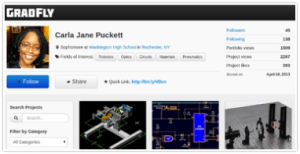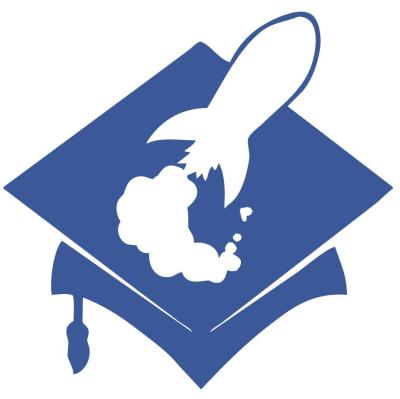The resume is going the way of the dinosaur. In the not-so-distant future, it’s easy to foresee a time when a one-sheet becomes a interactive, multimedia portfolio of your skills and greatest hits. And when we say the “not-so-distant future,” really, it’s already happening. LinkedIn brought the resume online, and, today, startups have begun to “vertical-ize” the online CV, helping to turn it into a souped-up portfolio and recruiting network. Designers and artists have Behance, doctors have QuantiaMD and Doximity, while students have Pathbrite and Seelio.
GradFly, a startup launching at TechCrunch Disrupt NY today, wants to go one step further in creating a targeted, online portfolio platform. There is a growing sense that for the U.S. (or any country for that matter) to stay competitive in an increasingly global and digital economy, it has to create a more tech-savvy workforce. And this starts with making drastic improvements to STEM education.
But students interested in pursuing careers in STEM, the ones building robots, inventing and coding don’t have a Behance where they can showcase their work. Sure, engineers have StackOverflow and Github, but that’s not quite the same. So, GradFly is building a portfolio platform exclusively for STEM-focused high school students, on which they can collect all their projects and research in one place on the Web and on their mobile devices.
As a former independent college admissions consultant, GradFly founder and CEO Oscar Pedroso tells us that he saw again and again that students were passionate about STEM, participating in their high school robotics and computing clubs, Lego leagues, math olympiads and so on. Yet, they didn’t have a way to keep track of their technical projects, inventions and experiments that they’d developed over the years.
 Some were using old-fashioned binders, others were using Facebook, YouTube and Tumblr, but really they wanted to share their work with a community of like-minded people, exploring their peers’ projects in the process. But, rather than simply allow students to build online portfolios, GradFly algorithmically matches students with colleges, internships and jobs based on their preferences and interests on the site.
Some were using old-fashioned binders, others were using Facebook, YouTube and Tumblr, but really they wanted to share their work with a community of like-minded people, exploring their peers’ projects in the process. But, rather than simply allow students to build online portfolios, GradFly algorithmically matches students with colleges, internships and jobs based on their preferences and interests on the site.
In turn, it allows colleges, recruiters and companies to gain access to student portfolios to connect with talented applicants using more than just their GPA, one-sheet and test scores. Students can join the platform for free, but GradFly sells a premium services to colleges and companies, in which they pay for an annual subscription that includes leads and metrics reports, for example. Companies also pay GradFly to list job postings and featured ads on the platform.
Like fellow Battlefield company, Meritful, GradFly is also seeking out partnerships with third-parties, like the one it recently struck with AweSweet.com, which has helped it build a contest platform on the site to let students participate in bi-monthly competitions and win prizes and scholarships.
 Furthermore, GradFly plans to enter the market via high school pilot programs, guidance counselor associations and through direct sales to colleges and, at present, more than a dozen strategic partners, which include organizations like FIRST Robotics and the National Science Foundation.
Furthermore, GradFly plans to enter the market via high school pilot programs, guidance counselor associations and through direct sales to colleges and, at present, more than a dozen strategic partners, which include organizations like FIRST Robotics and the National Science Foundation.
During its pilot, Gradfly is working with eight high schools in Western New York, as well as with the University of Rochester, University of Buffalo, and RIT to power their science, tech, and engineering platforms and provide their admissions departments with high quality high school students. After beta testing through these channels, the startup plans to begin attracting customers by offering colleges and high-tech companies free trials to its service.
While its seems a little bit like a combination of Pathbrite and Coursera’s own matching service, the key to success in this space is differentiation. GradFly wants to secure a leg-up in this space by not only focusing on STEM projects built by high school students, but pulling in badges from third party-sites (since there are few in STEM at this point) through partnerships with sites like Khan Academy.
And down the road, through competitions (NASA is already on the board and wants to sponsor projects for students interested in aeronautics) that allow them to enter for the chance to win scholarships and prizes, as well as mobile apps that will enable them to quickly upload pictures, videos into their portfolio and son.
In the big picture, there are nine million students interested in STEM and there were 7.4 million STEM workers in 2012, which is expected to increase to 8.65 million by 2018, Pedroso says. The market is growing, yet only 5 percent of American high schools have a computer science program, for example, so students who get interested in science and technology at a young age need better resources.
GradFly wants to provide a solution.
